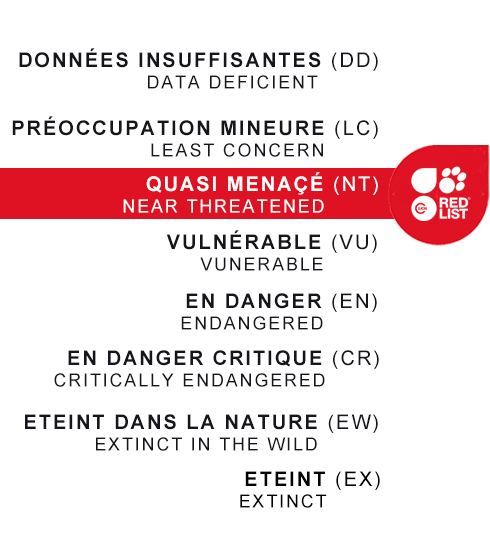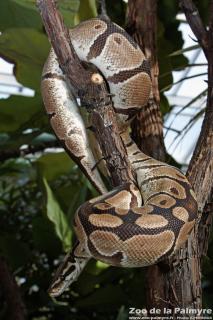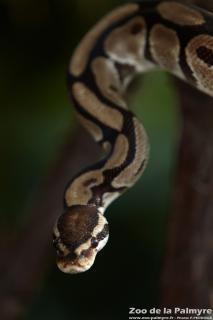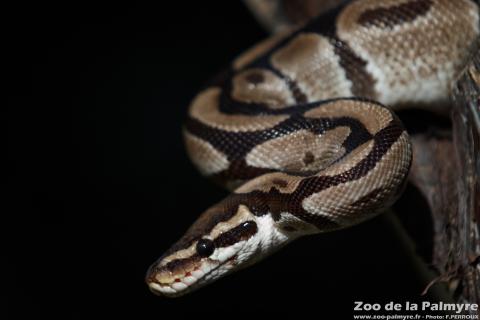Ball Python

Ball Python

-
Class
Reptilia -
Order
Squamates -
Familly
Boidae
-
 1.4m max.
1.4m max. -
 2–4kg
2–4kg -
 50–70 days
50–70 days -
 6–8
6–8 -
 30 years and up
30 years and up
-
Diet
carnivorous (rodents) -
Habitat
wooded savannah -
Range
Africa (from Uganda to West Africa) -
Population in the wild
En diminution -
IUCN REDLIST status


Much smaller and more docile than their cousins the Indian and Reticulated Pythons, Ball pythons tend to roll themselves up when approached, hence their name. They are good climbers but can often be seen on the ground.
Like the other Boidae, they have the vestiges of back paws on either side of their cloaca. These two ‘spurs’ are longer in males, allowing them to stimulate females and thus initiate copulation.
Snakes have only average eyesight but are very sensitive to movement and smells. The Jacobson’s organ, a pair of cavities in their palates into which they insert the ends of their bifid tongues, allows them to analyse scent particles in the air. This information allows the snakes not only to work out where they are but also to identify their prey.
In Africa Ball Pythons are hunted for their meat and skin, but the biggest threat to the species remains the international pet trade, which involves the capture and export of several thousand snakes each year. Ball Pythons are not endangered in the short term but the trade in them needs to be closely monitored and reduced.






